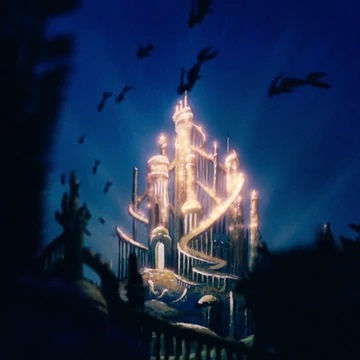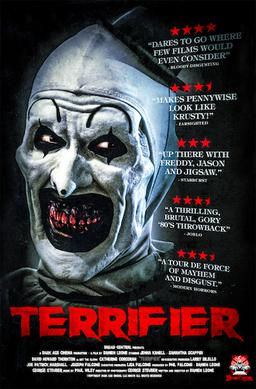The Little Mermaid (1989) review
- Jeremy Kelly
- Apr 25, 2022
- 7 min read
The Little Mermaid (1989)
Directed by: Ron Clements, John Musker
Produced by: John Musker, Howard Ashman
Screenplay by: Ron Clements, John Musker
Starring: Jodi Benson, Christopher Daniel Barnes, Pat Carroll, Kenneth Mars, Samuel E. Wright, Jason Marin, Buddy Hackett

If you’re like me, then congratulations; you’re 32 years old, 6’5” tall, have social anxiety, can’t whistle, can’t afford to move out of your parents’ house, and are way too passionate about football. But more to the point, you grew up watching the Disney Renaissance Era films of the 1990s. It’s commonly viewed as the time period that slingshot Disney to the top of not just the animation world, but media in general. However, there was a point when this was far from the case; in the years after Walt Disney’s death in 1966, the company struggled to find its next big creative hit. Their unquestioned low point came in 1985 with “The Black Cauldron,” their most expensive film yet that grossed less than half its budget domestically. In contrast, one of their former animators—Don Bluth—had set out to create his own hits like “The Secret of NIMH,” “An American Tail” and “The Land Before Time.” After overhauling their animation department, Disney’s next two films, “The Great Mouse Detective” and “Oliver & Company,” were modest successes, but they still didn’t have the monumental film they were looking for. Not until their musical adaptation of the 1837 Hans Christian Anderson fairy tale “The Little Mermaid,” a heartfelt project that set a template for future landmark films and inspired a new generation of Disney fans.
The main character is Ariel (Jodi Benson), a 16-year-old mermaid who lives in an underwater kingdom, yet is fascinated with anything related to the human world, which her father King Triton (Kenneth Mars) strongly tries to discourage. During one of her many trips to the surface with her best friend Flounder (Jason Marin) and Triton’s advisor crab Sebastian (Samuel E. Wright), she sees and falls in love with human Prince Eric (Christopher Daniel Barnes), saving his life in a storm. Triton is enraged and destroys Ariel’s collection of human artifacts; in her grief, she’s enticed into visiting Ursula (Pat Carroll), a scheming sea witch. She offers her a potion to make her human for three days in exchange for her voice, which is the only thing Eric remembers about her in his near-drowning state; if Ariel succeeds in earning the “kiss of true love” from Eric, she’ll remain human, otherwise turn back into a mermaid and become Ursula’s slave. She accepts and is assisted on land by Flounder and Sebastian, but Ursula will try every dirty trick in the book to keep her and Eric apart before sun sets on the third day.
Believe it or not, it was actually a long time before I watched the entire movie; I was familiar with the story and had seen various clips, but I think I was in high school when I finally saw the whole thing. From the moment I heard the start of the musical score, I was hooked; this was the first movie composed by Alan Menken, who, along with lyricist and longtime collaborator Howard Ashman, had gained notoriety on Broadway with songs for “Little Shop of Horrors.” It’s appropriate because this is often viewed as the movie that helped bring Broadway to animation; I know there had been plenty of musicals before this, but if you’ve ever seen a Broadway show, you’ll know what I’m talking about. The momentous entr’acte before the story starts, the characters expressing their motivations through song, the big, catchy, show-stopping musical numbers, etc. Here it makes for a grand, almost operatic setting, with one memorable track and sequence after another; Menken would become Disney’s go-to music man for over a decade, and his scores would help define a new era of cinematic animation.

What makes these songs so effective is what they say about the respective characters; Ariel is one that fans seem to either really love or really hate. On the one hand, it’s easy to say that her choice to surrender her entire life and even her voice all for a man she’s never met is extremely problematic and idiotic. But I think that’s a cynical way to look at it; what I get from her is that she’s a rebellious but kind-hearted, headstrong but passionate young woman who has all this enthusiasm but never been given a platform to properly express it, so that makes it easy for people like Ursula to manipulate. I think the movie could’ve had a smarter way of resolving the conflict for reasons I’ll get into later, but Ariel is so clear in her ardor for what she wants that I still end up rooting for her. The scenes where she’s on land are a great testament to that; she can’t speak, but we see through her body language that she’s maybe happier than she’s ever been in her life, surrounded by new and mysterious things she can’t even identify, but loves the experience all the same. Then going into the third act where it seems like everything’s falling apart and she’s down on the dock, I love the detail in her animation, where she’s so distraught she can hardly catch her breath; it’s powerful stuff.
She also gets, in my opinion, one of the most underrated Disney songs, “Part of Your World,” which Jodi Benson sings so beautifully it brings me to tears. However, it apparently was almost cut from the film after poor test screenings; directors Ron Clements and John Musker had to appeal to studio head Jeffrey Katzenberg for it to remain, considering it the “Over the Rainbow” of the film and essential to Ariel’s arc. It’s a key example of the “I Want” song in musical theatre, which has become a staple of Disney musicals; hell, their brand “When You Wish Upon a Star” is technically an “I Want” song. Of course, this isn’t taking anything away from the remaining songs; “Under the Sea” is impossibly catchy and probably deserving of its Oscar for Best Original Song, and “Poor Unfortunate Souls” is a satisfyingly dark track if ever there was one. Ursula herself is such a charming, deliciously wicked antagonist; her voice, design—apparently modeled after late drag performer Divine—mannerisms and theme are all iconic. This was in the early stretch of a long line of great Disney villains; soon after we’d get Gaston, Jafar, Scar, Frollo and Hades, and she definitely holds her own against the best of them.
The animation as well, compared to previous efforts, really feels like Disney going the extra mile; I’m aware that animation in general is extremely complex and time-consuming, so I’m not going to really knock those films. But if you look at ones like “The Sword in the Stone,” “Robin Hood” and the aforementioned “The Black Cauldron,” there’s a much more cheap and grainy quality to it, with plenty of recycling noticeable to the keen-eyed. Here it looks more refined like something from their golden or silver age, when they were pumping out their fairy tale classics. And guess what, this was their first fairy tale movie since “Sleeping Beauty” came out 30 years earlier. It was the first time in a while they used live actors for motion reference, and I can only imagine the ambition it took creating this underwater world; it was estimated that over a million bubbles were drawn. This was also the last Disney feature film to use the traditional hand-painted cel method of animation, gradually evolving to a digital coloring process called Computer Animation Production System, or CAPS. So not just in popularity but in practicality, this movie can be viewed as a major transitional benchmark in Disney history.

The supporting characters are serviceable; Buddy Hackett is funny as Ariel’s seagull friend Scuttle, Flounder is a cute enough sidekick, and Sebastian has some good reactions and lines of dialogue (yes Sebastian, the human world is indeed a mess). But the way he and Triton factor into the story create fundamental flaws; their specific characters are fine, and I appreciate that they give Triton some nuance. But I think the story needed to better balance the weight of Ariel’s decisions with the overall narrative. Sebastian has a scene where he’s in a kitchen and has to dodge the crazy Chef Louis (René Auberjonois), and we see the depths of how sea creatures are treated on land, but nothing’s done with it after that. The scene where Triton destroys Ariel’s trove is a big emotional moment, yet it never comes back into play the way it should. The two of them needed some kind of heart-to-heart interaction to tie it all together and really showcase the good and bad of both worlds in a smart way. I feel I shouldn’t take this too seriously, but there’s so much pathos to how and why they’re separated, it deserves a better resolution than just a cast of a trident, cut to a wedding, happily ever after, just like that. With that said, this is still a reasonably fun, if rushed, climax of Ursula rising up from the sea and attacking Ariel and Eric; and while I’m not saying this movie inspired any traces of macrophilia in me…I’m not going to say it didn’t either. Make of that what you will.
All kidding aside, while “The Little Mermaid” has various imperfections from a script standpoint, the craft and characters still make it a deservingly beloved entry in Disney’s catalogue of classics. Reportedly, Katzenberg initially felt that as a “girl’s film,” it wouldn’t be very lucrative; but it outstripped all competition in spades, easily beating Bluth’s “All Dogs Go to Heaven” on opening weekend and becoming their highest-grossing animated film since “The Jungle Book.” There have since been two direct-to-video sequels, an animated series that ran for three seasons, a stage musical, and a live-action adaptation set for release next year; in light of their history of adapting their animated classics, let’s just say I’m not too thrilled about it. Clements and Musker have become mainstay names in Disney, working on many hits while also directing and writing for “Aladdin,” “Hercules” and “Moana.” It’s definitely not my favorite from the Disney Renaissance, but it’s probably the most significant; after “Who Framed Roger Rabbit” helped revitalize the public zest for Disney animation, this pushed it over the top, establishing dream-defying standards that have only been exceeded again and again.
My rating: 9/10





Comments